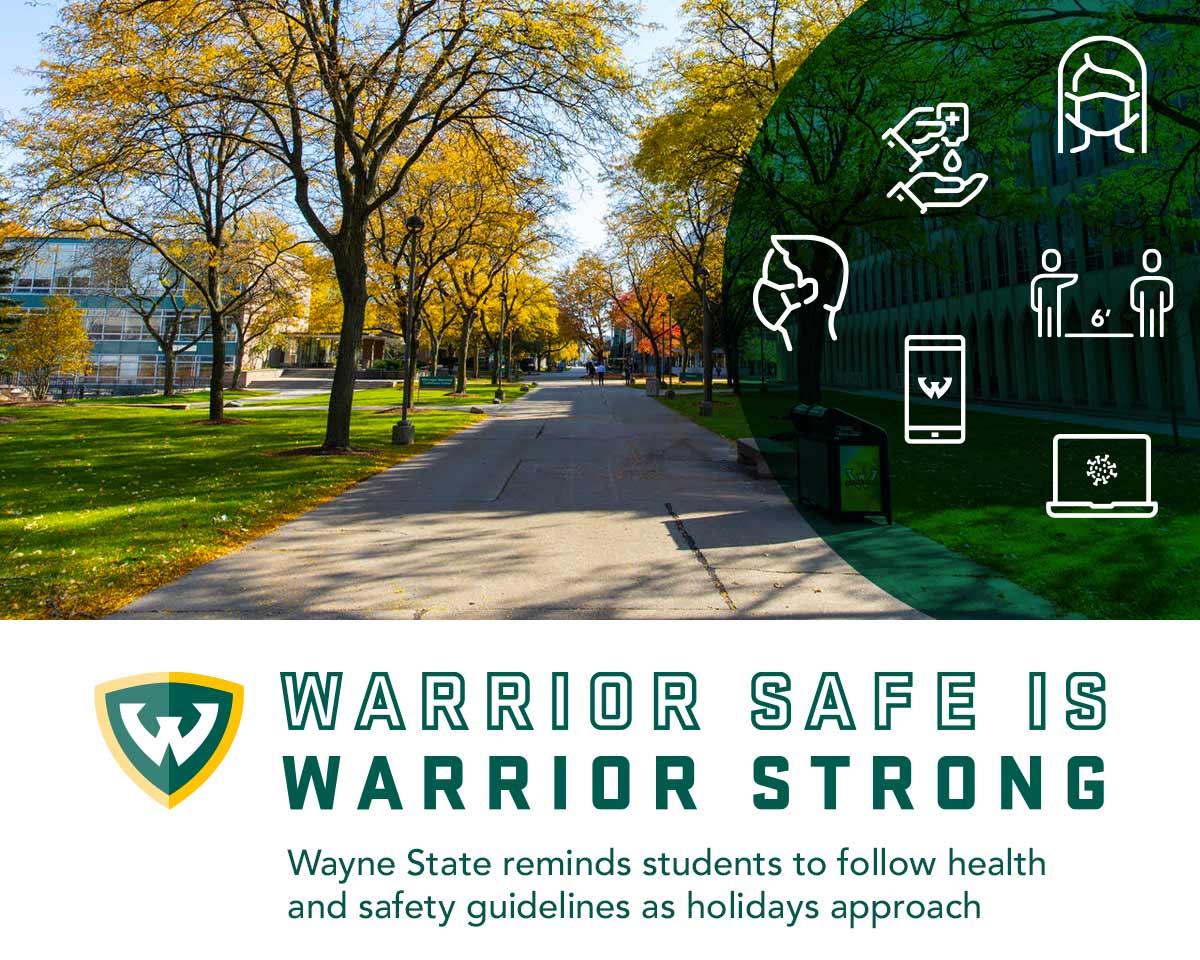One of the most difficult periods in many of our lives began one year ago this week, with the confirmation of the first COVID-19 cases in Michigan; however, reasons for optimism have emerged. Here is a timeline of Wayne State University’s response to the COVID-19 pandemic.
March and April: In early March 2020, President M. Roy Wilson charged a committee composed of health experts and university leaders to prepare a university-wide response to the COVID-19 pandemic that was rapidly spreading across the world. This committee met daily throughout the early days of the pandemic to respond in a manner that prioritized safety, was guided by science and allowed the university to continue its mission. A website facilitating communications was also launched.
The state’s first two COVID-19 were confirmed on March 10, and Wayne State transitioned to remote operations the following week. Spring break was extended to allow more time to prepare faculty and students for the transition, and Human Resources instituted new policies regarding flexible work arrangements.
To help combat the racial disparities seen throughout the Detroit area throughout the pandemic and assist with the city’s economic response, Gov. Whitmer appointed President Wilson to the Michigan Coronavirus Taskforce on Racial Disparities and Michigan Economic Recovery Council. A virtual commencement ceremony was held in late April.

May and June: Classes occurred in strictly remote formats throughout the winter, spring and spring/summer semesters, and most campus buildings remained locked. Limited staff remained on campus to support students living in apartments and residence halls. As Gov. Whitmer eased certain restrictions in May and the stay-at-home order lifted in June, research facilities resumed operations and custodial crews returned. The Campus Restart Committee was created to meet regularly, examine the latest data and plan for a potential return to campus in the fall.
July: On July 15, President M. Roy Wilson and members of the Campus Restart Committee announced plans to welcome students back in a limited capacity for the fall semester. At a town hall meeting, Wilson announced that classes would be held in a variety of formats — in person, remote and hybrid, with the ratio heavily favoring remote classes. The new semester would include use of a Campus Daily Screener tool as well as Warrior Safe is Warrior Strong guidelines — many of which exceeded those put in place by the governor and the Michigan Department of Health and Human Services — in order to keep campus safety the first priority.
Fall: Students moved back into campus housing over an extended period in August. Classes began in September, with the vast majority taking place remotely. Campus dining, retail, housing and other services reopened under guidelines to facilitate social distancing and limit capacity. The Campus Health Center conducted monitoring, contact tracing and communications for all COVID-19 cases on campus. The COVID-19 Dashboard was created to allow the university to track cases on campus as well as testing outcomes. These data, combined with data regarding the surrounding community and region, continue to be used to inform decisions related to campus operations.
A flu shot mandate was enacted to further protect the campus population. On Nov. 18, guidelines from the Michigan Department of Health and Human Services required the suspension of all in-person college classes for three weeks. Wayne State chose to carry that suspension through the remainder of the fall semester. Fall commencement was conducted virtually in December.

2021: The majority of the Wayne State community continues to learn and work remotely; however, there appears to be light at the end of the tunnel. COVID cases and positivity rates in Michigan have declined, hospitals are no longer overwhelmed and the presence of vaccines provides hope.
Some of this progress is directly attributable to Wayne State students and faculty in the health sciences who contributed to the front-line response and research, including clinical trials that helped develop lifesaving vaccines from Moderna and Johnson & Johnson.
In a March 8 campus message, President Wilson said current restrictions and precautions will continue in the coming months, but that, “Our hope is to have an open campus for the fall semester. While it won’t look exactly the same as it did pre-pandemic, we plan for the majority of our classes to be offered in person. We look forward to welcoming students to campus and offering the opportunities for social interaction and engagement that are so vital to the college experience. While our May commencement ceremonies will be conducted virtually, we plan to have an in-person celebration in December. For those who graduated during the pandemic and did not have the opportunity to celebrate with their classmates, professors and family, we are planning a special celebration for 2022.”
